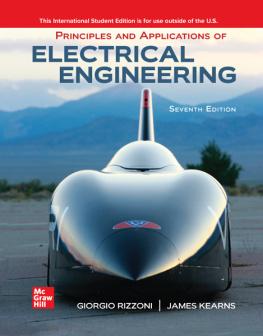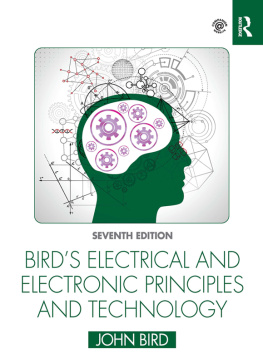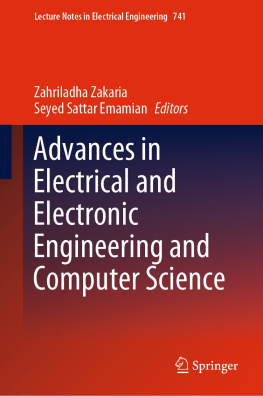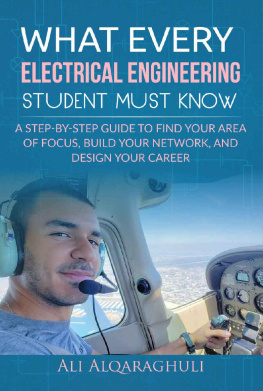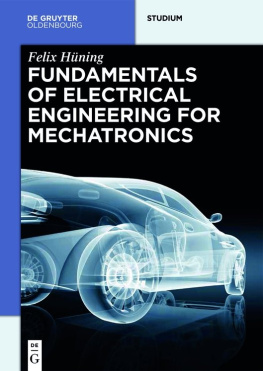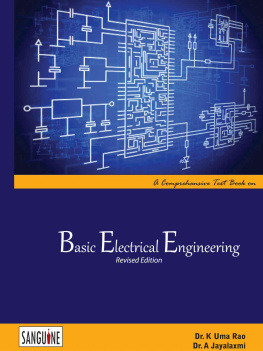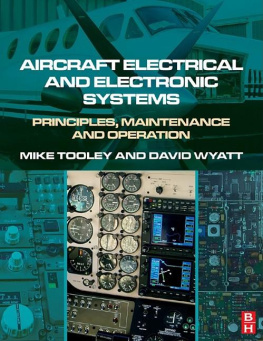
Page i
PRINCIPLES AND APPLICATIONS OF ELECTRICAL ENGINEERING
Seventh Edition
Giorgio Rizzoni
The Ohio State University
James Kearns
York College of Pennsylvania

Page ii

PRINCIPLES AND APPLICATIONS OF ELECTRICAL ENGINEERING
Published by McGraw Hill LLC, 1325 Avenue of the Americas, New York, NY 10121. Copyright 2022 by McGraw Hill LLC. All rights reserved. Printed in the United States of America. No part of this publication may be reproduced or distributed in any form or by any means, or stored in a database or retrieval system, without the prior written consent of McGraw Hill LLC, including, but not limited to, in any network or other electronic storage or transmission, or broadcast for distance learning.
Some ancillaries, including electronic and print components, may not be available to customers outside the United States.
This book is printed on acid-free paper.
1 2 3 4 5 6 7 8 9 LWI 24 23 22 21
ISBN 978-1-260-59809-4
MHID 1-260-59809-8
Cover Image: Denis Boussard
All credits appearing on page or at the end of the book are considered to be an extension of the copyright page.
The Internet addresses listed in the text were accurate at the time of publication. The inclusion of a website does not indicate an endorsement by the authors or McGraw Hill LLC, and McGraw Hill LLC does not guarantee the accuracy of the information presented at these sites.
mheducation.com/highered
Page iii
About the Authors
G iorgio Rizzoni, the Ford Motor Company Chair in ElectroMechanical Systems, is a Professor of Mechanical and Aerospace Engineering and of Electrical and Computer Engineering at The Ohio State University (OSU). He received his B.S. in 1980, his M.S. in 1982, and his Ph.D. in 1986, in Electrical and Computer Engineering, all from the University of Michigan. Since 1999 he has been the director of the Ohio State University Center for Automotive Research (CAR), an interdisciplinary research center in the OSU College of Engineering.
Dr. Rizzonis research interests are in the dynamics and control of future ground vehicle propulsion systems, including advanced engines, alternative fuels, electric and hybrid-electric drivetrains, energy storage systems, and fuel cell systems. He has contributed to the development of a graduate curriculum in these areas and has served as the director of three U.S. Department of Energy Graduate Automotive Technology Education Centers of Excellence: Hybrid Drivetrains and Control Systems (19982004), Advanced Propulsion Systems (20052011), and Energy Efficient Vehicles for Sustainable Mobility (20112016).
In 1999 Dr. Rizzoni established an automotive industry research consortium that today sees the participation of over 20 automotive OEMs and suppliers; in 2008 he created the SMART@CAR consortium, focusing on plug-in hybrid and electric vehicles and vehicle-grid interaction, with funding from electric utilities, automotive OEMS, and electronics suppliers. Through the Ohio Third Frontier Wright Project Program he created a Center of Excellence for Commercial Hybrid Vehicles in 2009, and a Center of Excellence for Energy Storage Technology in 2010.
Dr. Rizzoni is a Fellow of IEEE (2004), a Fellow of SAE (2005), a recipient of the 1991 National Science Foundation Presidential Young Investigator Award, and of several other technical and teaching awards.
The OSU Center for Automotive Research
The OSU Center for Automotive Research, CAR, is an interdisciplinary research center in the OSU College of Engineering founded in 1991 and located in a 50,000 ft2 building complex on the west campus of OSU. CAR conducts interdisciplinary research in collaboration with the OSU colleges of Engineering, Medicine, Business, and Arts and Sciences, and with industry and government partners. CAR research aims to: develop efficient vehicle propulsion and energy storage systems; develop new sustainable mobility concepts; reduce the impact of vehicles on the environment; improve vehicle safety and reduce occupant and pedestrian injuries; increase vehicle autonomy and intelligence; and create quieter and more comfortable automobiles. A team of 50 administrative and research staff supports some 40 faculty, 120 graduate and 300 undergraduate students and maintains and makes use of advanced experimental facilities. Dr. Rizzoni has led CAR for over a decade, growing its research expenditures from $1M per year to over $10M today, and engaging CAR in a broad range of technology commercialization activities, start-up company incubation and spin-out, as well as providing a broad range of engineering services to the automotive industry.
CAR is also the home of the OSU Motorsports program, which supports the activities of five student vehicle competition programs of several student vehicle competition programs including: the Buckeye Bullet (holder of all current U.S. and FIA electric vehicle land speed records), the EcoCAR hybrid-electric vehicle team, the Formula Buckeyes and Baja Buckeyes SAE teams, and the Buckeye Current electric motorcycle racing team.
Page iv
J im Kearns is an Associate Professor of Electrical & Computer Engineering at York College of Pennsylvania. He received a B.S. in Mechanical Engineering (SEAS) and a B.S. in Economics (Wharton) from the University of Pennsylvania in 1982. Subsequently, he received his M.E. from Carnegie-Mellon University in 1984, and his Ph.D. from the Georgia Institute of Technology in 1990, both in Mechanical Engineering. While at Georgia Tech he was the recipient of a Presidential Fellowship. Subsequently, he worked as a Postdoctoral Fellow at the Applied Research Laboratory of the University of TexasAustin.
In 1992, Dr. Kearns took his first teaching position at the Universidad del Turabo in Gurabo, Puerto Rico, where he worked with a small group of faculty and staff to build and develop a new school of engineering. In addition to other duties, he was tasked with developing a curriculum on electromechanics. During this time Dr. Kearns spent his summers at Sandia National Laboratories as a University Fellow.
In 1996, Dr. Kearns was the second full-time engineering faculty member hired by York College of Pennsylvania to (once again) develop a new engineering program with an emphasis on Mechatronics. As a result of that work, Jim was asked in 2003 to develop new electrical and computer engineering programs at YCP. Jim served as program coordinator until July 2010.
Throughout Dr. Kearns professional career he has been involved in teaching and research related to physical acoustics and electromechanical systems. His interest in electrical engineering began during his Ph.D. studies, when he built spark generators, DC power supplies, and signal amplifiers for his experiments. His steady pursuit of electromechanical engineering education has been the hallmark of his professional career. Dr. Kearns has been involved in a variety of pedagogical activities, including the development and refinement of techniques in electrical engineering education.
Dr. Kearns is a member of IEEE and ASEE. He is active in faculty governance at York College, where he is a past chair of its Tenure and Promotion committee and its Student Welfare committee. Dr. Kearns recently completed a four-year term as Vice-President and then President of the York College Academic Senate.
Next page
